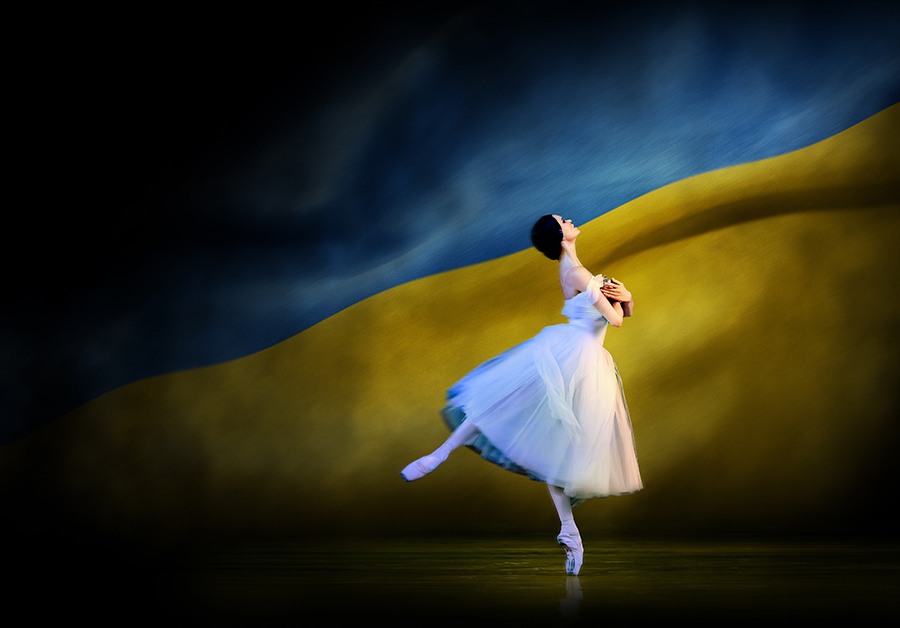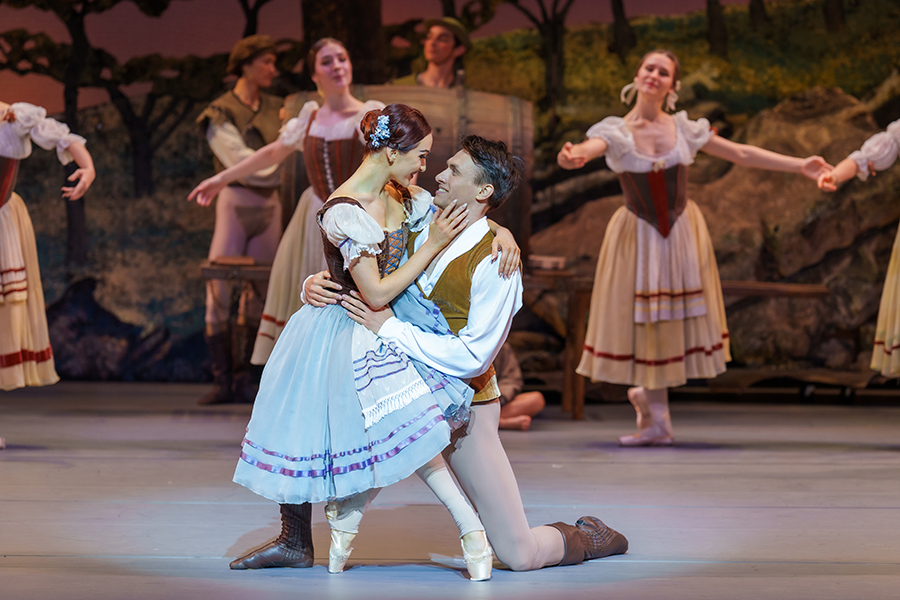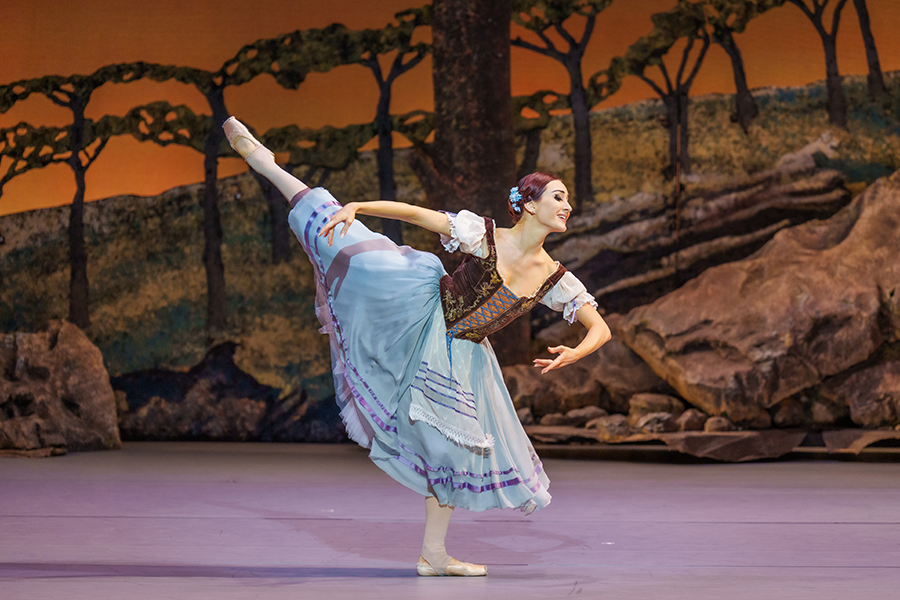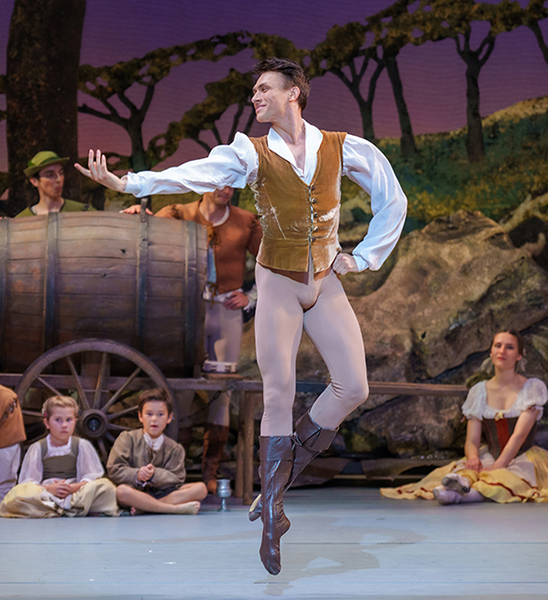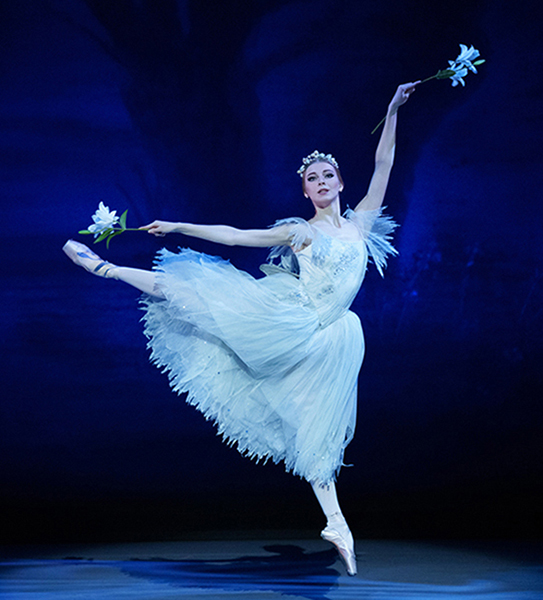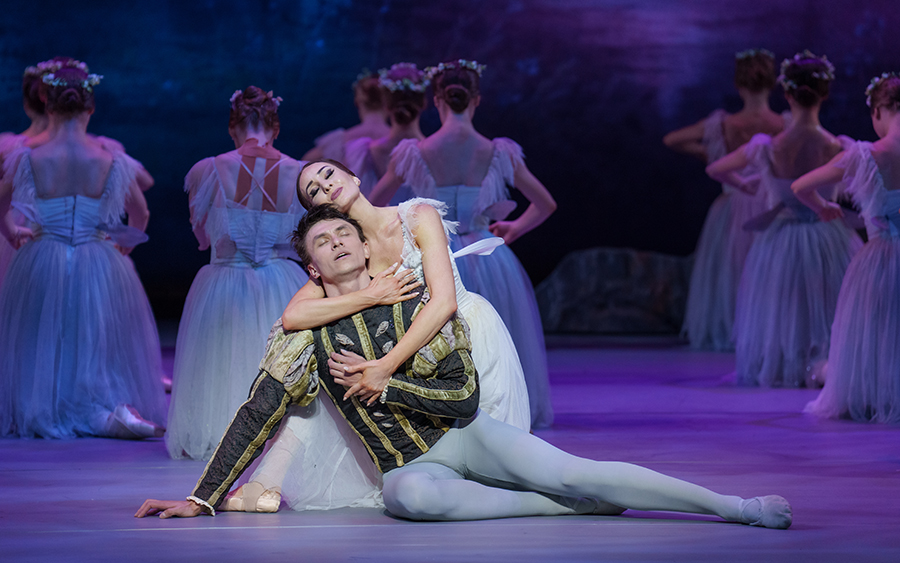Giselle, one of the oldest classical ballets in the repertoire, and certainly one of the greatest Romantic era ballets, is to be performed by the United Ukrainian Ballet at the London Coliseum this month.
In a new interpretation by internationally renowned choreographer, Alexei Ratmansky, Giselle will feature guest performances by English National Ballet’s Romanian principal Alina Cojocaru and the Company’s Ukranian soloist Katja Khaniukova. Viktor Oliynyk, conductor of the National Opera of Ukraine, will lead the English National Opera Orchestra.
The 60 dancers of the United Ukrainian Ballet are all in exile, and are supported by the United Ukrainian Ballet Foundation, formed to provide training and employment for the dancers until they are able to return to their homeland. Under the artistic direction of Igone de Jongh – former principal dancer with the Dutch National Ballet – the dancers are based in the Dutch Centre for Ukrainian Dancers in The Hague, and the non-profit Foundation will, in the longer term, raise funds to support Ukraine in the reconstruction of the cultural heritage of the country which has been destroyed by the war.
Alexei Ratmansky, Artist in Residence at American Ballet Theatre, is regarded as one of the great choreographers of our time. Born in St Petersburg and trained at the Bolshoi Ballet School in Moscow, he has choreographed ballets for the Mariinsky Ballet, the Royal Danish Ballet, the Royal Swedish Ballet, Dutch National Ballet, New York City Ballet, American Ballet Theatre, San Francisco Ballet, The Australian Ballet, Kiev Ballet and the State Ballet of Georgia, and also created works for Nina Ananiashvili, Diana Vishneva and Mikhail Baryshnikov.
Winner of a Golden Mask Award by the Theatre Union of Russia, he became Artistic Director of the Bolshoi Ballet in 2004, during which tenure the Bolshoi Ballet was named ‘Best Foreign Company’ in 2005 and 2007 by The Critics’ Circle in London. Ratmansky was made Knight of the Order of Dannebrog by Queen Margrethe II of Denmark in 2001 and was awarded a 2005 Benois de la Danse prize for his creation of Anna Karenina for the Royal Danish Ballet. He received a Critics’ Circle National Dance Award for The Bright Stream in 2006, was named a MacArthur Foundation Fellow for 2013, and won a second Benois de la Danse prize in 2014 for his Shostakovich Trilogy – a co-commission with ABT and San Francisco Ballet – for which he also received a Critics’ Circle National Dance Award for Best Classical Choreography in 2020.
Having both Russian and Ukranian roots, Ratmansky left the Bolshoi Theatre in Moscow, where he was choreographing a ballet, on 24th February this year, in favour of supporting the Ukranian dance and ballet world, working with Igone de Jongh, with whom he has collaborated for many years.
Giselle was initially the result of the collaboration of three French artists – Ballet Masters Perrot and Coralli, and composer Adolphe Adam. The composer, together with librettists Jules-Henri Vernoy de Saint-Georges and Théophile Gautier, was commissioned to create a vehicle for ballerina Carlotta Grisi in 1841. Inspiration was drawn from the poem Fantômes from Victor Hugo’s Les Orientales, which told of a Spanish girl who died after a night of frenzied dancing, and a passage in prose entitled L’Allemagne by German poet, writer and literary critic Heinrich Heine, about a Slavic tale of supernatural maidens called Wilis, young brides-to-be who die before their wedding day.
The original ballet tells of a frail young peasant girl who is betrayed by her beloved, the aristocratic Count Albrecht, as a result of which she dies of a broken heart. Giselle finds herself in a moonlit glade surrounded by the supernatural Wilis and their queen, Myrtha. Albrecht enters the glade to lay flowers on Giselle’s grave, and is summoned by Myrtha and her Wilis to dance to his death. Giselle – ever forgiving, and touched by his exhaustion – pleads for mercy on his behalf, and Myrtha ultimately frees him from the vengeance of the Wilis.
Marius Petipa, Premier Maître de Ballet of the Imperial Theatres in St Petersburg from 1871, staged four revivals of Giselle between 1884 and 1903, and it’s this final version on which most interpretations have since been based. Ratmansky’s interpretation is based on the Petipa version as well as revivals of the ballet from the 1860s, as he explains in this videoclip of the United Ukranian Ballet in rehearsal:
The costumes and set design, by Hayden Griffin, have been loaned free of charge by the Birmingham Royal Ballet, and members of the English National Opera Orchestra have also donated their services free of charge.
This production features guest performances by Katja Khaniukova (13th and 15th September) and Alina Cojocaru (14th and 16th September), and all ticket profits will go to the DEC Ukraine Appeal and The United Ukrainian Ballet Foundation.
The United Ukrainian Ballet’s production of Alexei Ratmansky’s Giselle, set to Adolphe Adam’s sumptuous score, runs at the London Coliseum from 13th to 17th September. For further information and online ticket reservations, visit https://ukrainegiselle.com/.
Information sourced from United Ukrainian Ballet
See also:
English National Ballet
London Coliseum
Alina Cojocaru
Katja Khaniukova

